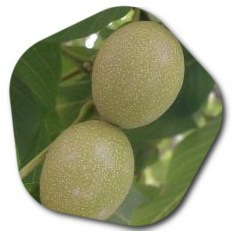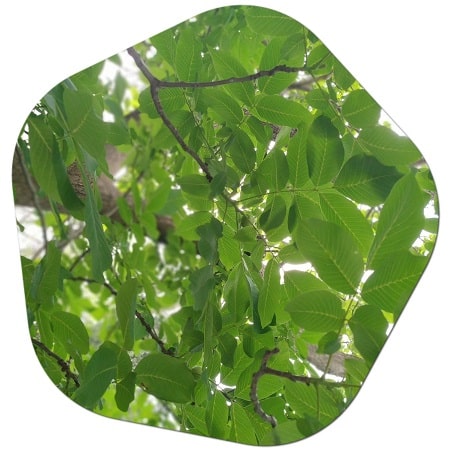Black walnut trees (Juglans nigra) are not native to Nova Scotia, Canada. They are primarily found in the eastern and central parts of North America, mainly in the United States. While black walnut trees may not grow naturally in Nova Scotia’s native forests, it’s possible to cultivate them in certain areas with suitable conditions. Here are some factors to consider:
- Climate: Black walnut trees thrive in temperate to subtropical climates. Nova Scotia has a cool-temperate climate with relatively mild summers and cold winters. The growing season may be shorter compared to regions where black walnut trees are more commonly grown.
- Hardiness: Black walnut trees are typically hardy to USDA Hardiness Zones 4 to 9. Nova Scotia falls within Zones 4 to 7, with some variation across the province. Certain areas, especially in the southern parts of Nova Scotia, may have more favorable conditions for growing black walnut trees.
- Soil: Black walnut trees prefer deep, well-draining soils with good fertility. They tolerate a range of soil types but perform best in loamy or sandy soils. It’s essential to ensure adequate drainage to prevent waterlogging, as black walnut trees are sensitive to overly saturated conditions.
- Sunlight: Black walnut trees require full sun exposure to thrive and produce abundant nuts. Ensure that the planting site receives at least six to eight hours of direct sunlight daily.
- Site Selection: When considering growing black walnut trees in Nova Scotia, select a sheltered site with protection from strong winds. This can help mitigate potential damage to the trees, especially during winter storms.
- Cultivar Selection: When choosing black walnut cultivars for planting in Nova Scotia, consider selecting varieties or hybrids that have demonstrated better adaptability to colder climates and shorter growing seasons.

It’s important to note that successfully growing black walnut trees in Nova Scotia may require careful site preparation, soil amendments, and regular care and maintenance. Consulting with local horticultural experts or arborists who are familiar with the conditions in Nova Scotia can provide valuable guidance and help ensure the best chances of success.
How to care for black walnut trees in Nova Scotia
If you are interested in growing black walnut trees in Nova Scotia, here are some general care guidelines to consider:
- Planting: Choose a suitable site that receives full sun and has well-draining soil. Black walnut trees prefer loamy or sandy soil types. Ensure the planting hole is wide and deep enough to accommodate the root system. Plant the tree at the same depth as it was in the nursery container or the root ball.
- Watering: Newly planted black walnut trees require regular watering to establish a healthy root system. Water deeply, providing enough moisture to reach the root zone. Once established, black walnut trees are relatively drought-tolerant but may benefit from supplemental watering during dry periods, especially in the first few years.
- Mulching: Apply a layer of organic mulch, such as wood chips or bark, around the base of the tree. Mulch helps conserve soil moisture, suppresses weed growth, and insulates the soil. Keep the mulch a few inches away from the trunk to prevent moisture buildup and potential trunk rot.
- Pruning: Prune black walnut trees during the dormant season (late fall or winter) to remove any dead, damaged, or crossing branches. Pruning can help improve the tree’s structure, promote airflow, and maintain a desirable shape. Avoid heavy pruning, as black walnut trees may have a tendency to produce excessive regrowth.
- Fertilizing: Conduct a soil test to determine if any specific nutrients are lacking. Black walnut trees generally do not require heavy fertilization, but if the soil is deficient in certain nutrients, you can apply a balanced, slow-release fertilizer following the manufacturer’s instructions. Organic amendments like compost can also be beneficial for improving soil fertility.
- Pest and Disease Management: Black walnut trees are relatively resistant to pests and diseases. However, they can be susceptible to walnut caterpillars, walnut husk flies, and some fungal diseases like anthracnose. Monitor the tree for any signs of pest infestation or disease and take appropriate measures if needed. Consult with local arborists or extension services for specific pest and disease management strategies in Nova Scotia.
- Harvesting Nuts: Black walnut trees typically start producing nuts after around 10 years. Harvest the nuts when they fall naturally from the tree and remove the husks. Allow the nuts to dry for a few weeks before cracking them open to retrieve the edible kernels.
It’s worth noting that growing black walnut trees in Nova Scotia may present some challenges due to the region’s climate and growing conditions. Consulting with local experts or arborists with experience in growing black walnut trees in Nova Scotia can provide more specific guidance tailored to your location.
How much fruit does black walnut bear in Nova Scotia?
Black walnut trees (Juglans nigra) are known for producing edible nuts rather than fruits. The amount of nuts a black walnut tree bears can vary depending on several factors, including the age and health of the tree, environmental conditions, and pollination.

Black walnut trees typically begin to produce nuts after around 10 years of age, although it can take longer for them to reach full nut production. Mature trees have the potential to yield a significant amount of nuts, with some producing hundreds of pounds in a single season. However, it’s important to note that the nut yield can vary from year to year, and not every year will necessarily be a heavy bearing year.
It’s worth mentioning that black walnut trees have a characteristic alternate bearing pattern, meaning they may produce a heavy crop one year, followed by a lighter crop the next year. This natural cycle of varying nut production can be influenced by factors such as weather conditions, pollination success, and the tree’s energy reserves.
Additionally, the presence of other black walnut trees or compatible pollinizers nearby is important for successful pollination and nut production. Black walnut trees are not self-fertile, so they rely on cross-pollination from another genetically different black walnut tree or a compatible English walnut (Juglans regia) tree for optimal nut set.
Overall, while black walnut trees have the potential to produce a substantial amount of nuts, the actual nut yield can vary and is influenced by multiple factors. If you’re considering growing black walnut trees for nut production, it’s advisable to consult with local experts or agricultural extension services for specific recommendations tailored to your location and growing conditions. Characteristics of the black walnut tree in Nova Scotia >>
Pruning a black walnut tree in Nova Scotia
Pruning a black walnut tree (Juglans nigra) is an important part of its care and maintenance. Here are some general guidelines for pruning a black walnut tree:
- Timing: Prune black walnut trees during their dormant season, which is typically in late fall or winter. Pruning during this time helps minimize stress on the tree and reduces the risk of disease or pest infestation.
- Remove Dead or Diseased Branches: Start by identifying and removing any dead, damaged, or diseased branches. These branches can pose a risk to the overall health of the tree and should be pruned back to healthy wood. Make clean cuts just outside the branch collar (the swollen area at the base of the branch).
- Thinning: Thin out the tree canopy to improve airflow and light penetration. Remove any branches that are crossing, rubbing, or growing towards the center of the tree. Aim to create an open and well-spaced canopy, which allows for better sunlight exposure and reduces the risk of fungal diseases.
- Structural Pruning: Prune to establish a strong framework of scaffold branches that are well-distributed around the tree. This helps maintain a balanced and sturdy tree structure. Remove competing or weak branches, and encourage the growth of main branches that have wide angles of attachment to the trunk.
- Size Control: If necessary, prune to manage the size of the tree. Black walnut trees can grow quite large, so pruning can help control their height and spread. However, avoid heavy pruning as black walnut trees may have a tendency to produce excessive regrowth. Instead, aim for gradual and selective pruning to maintain the tree’s natural form.
- Pruning Cuts: Use proper pruning techniques to make clean cuts. Avoid leaving stubs, as they can become entry points for diseases. Make cuts just outside the branch collar or branch bark ridge, which are natural boundaries that aid in wound closure.
- Sanitation: Dispose of pruned branches and debris properly to reduce the risk of disease transmission. Burn or remove them from the area to prevent potential infections from spreading.
- Professional Assistance: If you are uncertain about pruning or dealing with larger branches, it is advisable to seek the assistance of a professional arborist with experience in pruning black walnut trees.
Remember that each tree is unique, and the specific pruning needs may vary. Consider the tree’s age, health, and overall growth habit when making pruning decisions. Consulting with a local arborist or tree care professional can provide personalized advice based on your specific black walnut tree and local growing conditions.
